Published by Jeremy.
Disclaimers: We use demographic data, email opt-ins, display advertising, and affiliate links to operate this site. Please review our Terms and Conditions for more information. This website is intended for those of legal drinking age in your jurisdiction.
WSET Diploma D4 covers all things sparkling wine and, to me, was the most daunting outside of D3: Wines of the World.
The reason for this is that while the category of sparkling wine does not have many broad topics, the devil is in the details with many nuanced topics on things like local laws, production volumes, climates, lees aging, and more.
Throw in a major unexpected curveball on my exam (identifying country of origin and grape), and you have the makings for a rather challenging exam all around. So in this one, I wanted to dive into more about what you can expect, how to plan, and some D4 exam day logic as well!
Note: I took the WSET Diploma D4 exam in October 2022. Test material and structure can and does change over time. I passed D4 with merit.
What to Expect in the WSET Diploma D4 Exam
WSET Diploma D4, sparkling wine, is a roughly four-week program that covers a dozen or so wine regions worldwide for all things sparkling wine. The book covers approximately 120 pages and leans heavily on old-world wines with a top-level introduction to new-world producing regions a la USA, Argentina, New Zealand, etc.
At its core, this module teaches just a handful of broad production techniques which can be applied worldwide. As such, you are going to be learning a lot of nuanced material (i.e. laws, climate) and the program forces you to make several connections for yourself from there if asked on the exam- especially in the latter New World chapters where these topics are not repeated as they've already been introduced earlier.
As such, I view the important elements of D4 as less about learning the facts (although they are obviously required) but rather building the logical connections on how everything works together (layering in D1 and D2 material, too!). This may require several readings of the book to have a-ha moments as the book is, at times, quite vague.
The exam is similar to the D5 exam in that you have 90 minutes to complete a tasting portion of three wines and a theory section typically of three to five questions in essay format. The tasting and theory sections are graded independently, you'll receive scores on both, but you must receive a composite average score of greater than 55% between the two modules (with no single module less than 45%) to pass. So you can pass if you receive 55%+ in both categories, or 50% in theory and >60% in tasting, for example.
The good news is that tasting for D4 shouldn't be complicated. I would go as far as saying it should be the easiest of the three tasting exams. This is because, unlike D3 and D5, our instructor made it seem like you generally don't have to guess the grape or country of origin for your wine (a big, big caveat below). So where you may stand to lose upwards of five points per wine if you thought a Port was Banyuls or vice versa in D5, in D4 you likely won't have that depth come exam day in D4.
- Caveat: As with everything, it is entirely possible they could ask you about grapes and country of origin. I, unfortunately, had to guess on all three of mine and I suspect that exam will go down as one of the hardest in recent memory. Before this exam, the only time I ever saw identifying country as a comment on an evaluator report was with a red, where you had a 50/50 shot between Italy (Lambrusco) and Australia (Shiraz). Unlucky me here, but we'll give some tips later just in case this pops up on your own exam.
The bad news is that theory can be truly awful. I was more afraid of the theory portion of this exam than just about any other test I've taken to date (with D3 being the only other module I had outstanding at this point). Most of this was on me, as I simply didn't know much about sparkling going into this module, but also because the content is much more nuanced.
- To compensate for a weird-tasting exam, I will say my theory section was rather straightforward. I actually felt better about theory in this module than just about any others to date outside of the WSET D1 exam and ignoring D3 (which I hadn't taken yet). As always, I never share the questions asked out of courtesy to the program.
The reason for the nuance is rather easy to explain. Virtually all traditional method wines are made in the same process. If you know the Champagne method inside and out, you can apply it worldwide and probably give a reasonable answer- simply adjust for local climate, laws, etc. and you're there. The same is true for tank method, the Asti method, and the ancestral methods. From a broad production standpoint, sparkling wine is easy- conceptually at least.
The problem is that the differences you are expected to know are quite focused and precise, which is likely what you will be asked in the exam.
The various grapes being used is a big one- every grape has its own disease concerns, ripening issues, and the like. Many are similar, but you are expected to make logical connections not overtly stated in the book all the same (e.g. why Meunier is grown in a valley in Champagne instead of Chardonnay- it has to do with its budding and frost). The soil types of regions and PDOs is another huge one as well (e.g. the best Chardonnay is grown on chalky soil).
On the winemaking side, you have incredibly subtle differences in rules. One country may require harvesting at X% potential ABV. Another may base it on an arbitrary date, gluconic acid levels, etc. One region may require 12 months on the lees for NV and 18 months for Vintage, whereas another may require 15 months and 24 months respectively- possibly with additional aging in bottle before release, too!
Multiply this over France, Italy, Spain, Germany, England, USA, Chile, Argentina, Australia, and New Zealand, plus their respective PDOs, and you have a large number of rules that you will have to remember.
Tips for Preparing for the Exam
When it comes to preparing for the tasting component of the D4 exam, you, obviously, have to practice by drinking.
At the end of the day, you are expected to know the difference between traditional method and tank method wines first and foremost plus Asti and Ancestral methods, too. Asti's are generally quite easy to recognize due to the sugar/floral balance, so really you should do whatever you can to drink enough wine to understand what autolytic character is in the traditional method outright. Whether you can grasp this by trying six wines or 60 is really on you.
- You'll have more obvious autolytic characters with higher-end Champagnes, so try a Vintage or Prestige bottle if you need a reminder of intensity and aging potential. NV Cremants, for me at least, often were far lighter than their NV Champagne counterparts, so if you want a challenge in finding autolytic characters, buy some cheap Cremants with only the minimum time on lees.
Ultimately, you still need to be able to work your way tasting through traditional method wines (French, Spanish, and German Riesling Sekt with sufficient lees aging to start), tank method wines (like Prosecco, Lambrusco, cheaper German Sekt, etc.), Asti method wines, Sparkling Shiraz (traditional method but some modifications to the process before that), perhaps a Pet Nat, maybe rose variants (at least those made traditional vs tank methods), and that is a good starting list to get ready for the exam. If there is one random wine I'd throw on there as well, be sure to get a Xarel-lo based Cava for its unique characteristics as well- even if just enjoying a glass at a wine bar, you'll want to try that one!
Will this help get you there if you are asked country of origin and it ends up being, say, Australian sparkling from Tasmania? No. But will they ask you to identify a Tasmanian Chardonnay by location? Dear lord, I hope not. In virtually every case I've seen where they ask for country of origin, there is often a clear reason for doing so. That being said, I wouldn't fret too much if you cannot find a Chilean sparkling, Tasmanian sparkling, etc. Simply work the spread of styles, break it all down to tasting logic, and go from there.
- In retrospect, I don't think naming country of origin and grape is as bad for sparkling as it is in fortified. There you typically have to guess country, category (port vs sherry), and style (vintage port vs medium sherry). There are no competing options here. If you guess Portuguese Port and it is Spanish Sherry, you missed all three by default. In sparkling, you can miss the country but still use logic to explain how you reached your conclusion and also be right on the grape unless it is a very extreme (and hopefully quite obvious wine) a la Riesling or Muscat. Partial points add up.
Likewise, I also packaged up small vials of sparkling wines in air-tight jars a few days before my exam to do some samplings before the test (limited to not blow out my palate, and spitting not to get buzzed) just to 100% know that I can identify autolytic character first and foremost. These included a Cremant, Demi-Sec Champagne, Lambrusco, Cap de Classique, and a Prosseco to give me varying autolytic characters and sugar levels to try just before the exam.
On the theory side, the problem with this module is a lot of the material is nuanced. Virtually all traditional method wines are made the same way (broadly). Virtually all tank method wines are made the same way (broadly). As such, this module is more about learning the logical connections in how everything works from start to finish. So if you can do this, you can likely apply rough rules of thumb for any producer worldwide with minor adjustments for local climate, geography, laws, etc., and end up being pretty darn close to a reasonable answer (yes, this involves going back to D1 and D2!).
The logic for sparkling wine is pretty universal!
It is the minutiae that makes this course difficult relative to the questions asked. You may get a point for bringing up lees aging in the proper context. But you may get three points for going into the details with numbers and laws if relevant, and this is where things get challenging as these minor details come up again, and again, and again. That rough logic mentioned above may only get you 30% of the way to full points, or 50%, or possibly 75%- the nature of the question asked can cause a huge swing in how detailed you need to be.
On the lees side of things, for example, NV Champagne is aged on the lees for 12 months minimum with a total of 15 months required until release. Vintage Champagne is 12 months on the less with 36 months of required cellar aging until release (but most Vintage producers keep the wines on the lees longer during that period). The EU only requires 9 months minimum, so other countries may go to the legal minimum for cost concerns. Italian traditional method producers are trying to get a leg up on France, so they are often higher- especially for premium bottles.
As such, simply reading through the book a half dozen or so times may only help net you a broad understanding of the material. While this is necessary, as you need to be able to logically reason the connections between grape types, disease risk, how planting locations affect that, and how it may translate into the final wine, the minor data points above are really hard to commit to memory. This is the depth required to really rock sparkling wine.
There are several ways you can work this into your studying:
First, I found myself creating wordplays here to make the connections I couldn't commit to memory. High-quality Chardonnay likes Chalky soils. Vallee de la Marne likes Meunier because it is later budding than the other Champagne grapes and the valley gets late spring frost (a logical link!). Cote de Bar makes Pinot Noir (rhyme it). The more connections you make, the more you begin to add the “why” component as well (e.g. why Chardonnay likes Chalky soils).
Second, when in doubt, assume other countries either follow EU minimums or Champagne's lead for lees aging. But remember, Spain, Italy, and higher-end associations (e.g. VDP members in Germany) are trying to make a name for themselves, so they follow higher standards. (In my head, I envision a rivalry here, which reminds me not to quote France's lees rules in these countries.)
Third, the best thing I did here was to get a spreadsheet of all data I did not inherently know by default. This includes grape selection to business laws and everything in between (our friend Wine and Words has a great one but note it was made from an earlier book edition). I printed this out, put it up on a wall, and read through it as many times as possible until I could fill in each cell's data before reading it. This, to me, was incredibly helpful in reminding me of details I didn't know and allowed me to focus on them as the exam got closer.
- As with all Diploma level classes, the book becomes much easier if you break it down to things you don't inherently know as a default from WSET Level 3 and other modules. Whether that is via a table, notes, etc. really will depend on how you learn.
Fourth, it is always recommended to read through the book once and make a list of definitions for any keywords you don't know by memory. This exam often loves to have Define questions (or so our instructor said and was implied in many evaluator reports- we had none but had a few Describe scenarios), so being able to roughly memorize any keywords (even those in French, German, and Spanish) can help net you some free points come exam day if you are lucky to get a question like this. Learn echelle des crus, liqueur de tirage, sekt, and the ~75 or so other keywords in the book and make them second nature. If you are lucky and get Define questions, rocking these could be an easy 20-25 points even if you are only 75% right.
Finally, Brainscape has a really good D4 flashcard program which, while aligned to the former edition of the book (a new one was released for my 2022 class), still felt like it was 90%+ accurate for my book and, again, was a good reminder of everything I didn't know which helped for last minute studying. For as good as the cards are, I'll take the risk of any inconsistencies. I simply don't have time, nor interest, to make my own cards for these exams.
Ultimately, if you can be given a region, grape, or style (just one) and can fill in all the remaining details ranging from growing concerns to sales, you'll be in a good position for D4. But, you know, that is also us telling you to know pretty much everything- and don't forget that D1 and D2 terminology and references are all fair game, too!
Logic to Consider for WSET D5 Exam Day
As with most Diploma-level exams, we need to break our tips sections into theory and tasting. While these are combined into one single exam, they should be approached differently.
Generally speaking, the biggest goal of the tasting exam involves your quality assessment (as always) and then being able to identify if a wine is made via the traditional method, tank method, Asti method, or (and very unlikely) the ancestral method a la pet nat. If you can correctly identify the traditional method vs tank method, and get into the ballpark on quality, odds are good you'll hit 55% in this section without issue- the number of points allocated to these two questions, if asked, is about 30% of the total (estimated).
So, naturally, you need to make sure you can detect even the faintest hint of autolytic characteristics in the wine. If you can do this, you'll be well ahead of the curve and will likely be fine come exam day on the tasting side. That being said, we picked up some good tips for the tasting section that are worth mentioning.
First off, taste your wines as soon as the exam starts. I still advocate writing down 30-40 keywords first thing (more on that below), but once you do that go straight to tasting. While mousse was removed as a requirement for D4 in 2022, you can still glean a bit of information from the wine while it is sparkling and its texture very much can be used in your quality assessment argument as well. I, personally, also think light autolytic character fades away with the bubbles, so if you want your best shot at identifying a NV traditional method wine, for example, you need to assess it as soon as it is poured- once it goes flat I could never pick up that character anymore.
So while other modules we may recommend you only do a bit of tasting first (say, color and aromas) and hit theory right away to give yourself the most time for that portion, for D4 you very much should do tasting first and try and get it done in 20 minutes at most.
Second, save some of your wine, let it sit while you do theory, and return to it towards the end of the exam. Effervescence can mask (or even heighten) some characteristics in sparkling wine. What you think may be medium(+) acidity may only actually be medium but could be perceptively altered due to a certain style of bubble characteristic. You may be able to tweak your assessment or adjust flavors after the bubbles have been allowed to fizzle out. (Likewise, how fast bubbles dissipate could be a sign of the production method, too, so watch that as the wine is poured and over time!)
Third, generally speaking, if a wine is made in the traditional method, the alcohol is almost always going to be medium. If it is made in the tank method, the alcohol will disproportionately be low (but can sometimes be medium). If you are thinking it is an Asti method wine, it is almost always going to be low. The alcohol for traditional method wine is almost guaranteed every single time as the final degree of alcohol is fine-tuned during tirage. Take your free points or 50/50 chance, don't dwell on it, and move on.
Fourth, if you get a red wine you only have two options- Lambrusco or Sparkling Shiraz. If you can taste these two side by side when practicing, you'll quickly realize they are unique and most likely not even comparable. Don't forget tannin assessments if you get a red!
Fifth, if you do have to guess the country of origin and grape, take a deep breath, don't panic, and go back to basics.
The first thing you need to do is identify the method of production as it helps you limit possible countries of origin. This may or may not be asked if you're asked for the country (not enough points for all), but you still need to think about this all the same. If it is tank method, odds are good you'll detect notes in the wine to highlight where it is from (e.g. Lambrusco, Prosecco, or Asti from Italy should all be obvious). For traditional method (or all others you are unsure of), evaluate it the way you would a still wine. Are you getting simple fruits and high acid or stone/tropical fruits and medium acid? Short of getting a varietal that is obvious (e.g. Riesling due to petrol/smoke or Xarel-lo due to fennel/earthiness), you have to go to other components to justify your answer.
In my exam, guessing the country of origin required a justification with a total of four points per wine. I have to imagine indicating a cooler climate due to acidity, simple primary fruits, etc. would still net you two or three of four if you guessed Italy and it ended up being France. As with most WSET tests, the logic is the important part and I'll always take partial credit if I can get it.
One wine we had was a high quality 100% Chardonnay, and while I called the country wrong my justifications pointed in the right direction (I also called the grape). Another wine we had was a lower-quality wine from the New World. I missed the method completely but had you highlighted warmer climate points (i.e. acidity, flavors, etc.) you probably would be in the ballpark that it is a blend of Chardonnay and Pinot Noir/Meunier, too.
The point here is don't fret too much about country of origin because your logic for explaining your selection can still net you a few points. Yes, it would suck to lose ~5 points per wine to be completely wrong, as I did on one, but if you are asked this there is likely going to be a reason for it. Use logic, go back to basics, and justify your answer well and you'll probably still get a few points. Get one perfect or two of the three close enough, and you just netted yourself some breathing room. (I simply cannot imagine WSET making this question all or nothing.)
Finally, your quality assessment, the potential for aging, and tasting notes should all agree when you review them. It is unlikely that any wine made outside of the traditional method will be outstanding (complexity is an issue), and also unlikely that they would improve with age (the whole preserving primary fruit thing is their whole deal). It is also unlikely that any traditional method wine that is below very good is age-worthy, either. You need intense fruit, intense acid, and notable autolytic characteristics for them to not only hold but improve over time, all of which may be justification to push a very good wine to outstanding, too.
- My general theory is autolytic character degrades over time due to oxidation (lees are an anti-oxidant- remember late disgorged wine theory), so you need intense lees notes so they can hold over the years required for tertiary flavors to develop (which requires intense primary fruit flavors to start, too). Then, as with still wine, higher acidity helps with this being enjoyable, too. So you need a trifecta- all of which push a wine to be very good or outstanding exclusively.
While this framework may not apply 100% of the time, if you look at this exam from a game theory side, then reducing the options means more potential free points and takes you one step closer to passing. Remember that you may need to show primary, secondary, and tertiary notes to get full points if the wine contains all three, so think back to your grid when tasting at all times!
On the theory side of things, good luck. Seriously, it is a beast and your experience on exam day will truly boil down to what kind of questions are asked, their associated points, and how many nuanced details you can remember.
First off, we recommend coming up with 30-40 words that you can write down at the start of the exam on your scratch paper (after the proctor says go, as always- you cannot take notes into the exam) to build yourself a defacto key of things you want to remember. As with all exams, forgetting an entire silo of topics is the easiest way to lose bulk points, and this method helps minimize that if only because you are reminding yourself of the major categories at the very start of the exam. If you can write all of them out in less than two minutes, it is time well spent in my opinion.
My list was something of the following (of which I remembered Grow, Make, Sell for the first three rows in a pinch):
Second, as stated above, you will want every extra second possible for theory on this one simply because the material is so nuanced. If you go down the wrong rabbit hole on one question, you need to make the points up somewhere else. While we find sacrificing two minutes for the above keywords to be an acceptable trade-off, you really need to get tasting down as fast as possible to give yourself as much time as you can here. During my practice exam, I got my preliminary tasting done between 15-20 minutes, but I allocated 5 more minutes at the end once the bubbles settled.
Do not spend 30 minutes on the wines if you can improve your speed. The extra 10-15 minutes in theory are what you need!
Third, if there is any module where the formatting of the question matters the most, it is likely D4. Explain vs Describe vs Compare questions really set you up for the entire basis of your answers in all exams, but this is especially crucial for a nuanced theory exam like D4.
When you read examiner reports, the biggest complaint in D4 is that students don't answer questions as asked, often going on tangents discussing challenges in the winery when a question is only about in the vineyard, giving challenges when the question only asked about benefits, etc. Throw in variations of Explain, Describe, Define, etc. and there are many opportunities for you to spend 5, 10, 20 minutes answering something that wasn't asked at all- so read the question carefully and respond accordingly!
Finally, it is always good practice (for involved questions, at least) to state a fact, explain why, and explain why one or two more times if you can. Throw in numbers if you remember a planting density, aging requirement, etc., if relevant, too (hence fact, why x3, # x3 in my key above). For a 40-point Evaluate question, for example, odds are good you can discuss 5-8 separate broad topics. Give one fact, two or three why's, and two or three numbers per broad topic and you've now given yourself somewhere between 30-50 “checks” that an evaluator can be used to give you points. If you have a few minutes to review at the end and can count > 40 “points” made on a 40-point question, you should feel comfortable with your response even if you miss some points overall.
- I always target +20% “points” made on any given question over the actual question value. So on a 40-point question, being closer to 48 “points” made is better breathing room. This lets me be wrong and have buffer.
Overall, while WSET Diploma D4 is an incredibly nuanced module, if you are able to understand traditional vs tank method wines, use logic to deduce broad regions, and employ causal reasoning on broad topics you'll ultimately do quite well on the exam!
Have you taken WSET D4 for sparkling wine and the exam? What did you think of it? Comment below to share!
Upgrade Your Home Wine Bar
Need to upgrade your wine bar? Grab some new wine accessories:

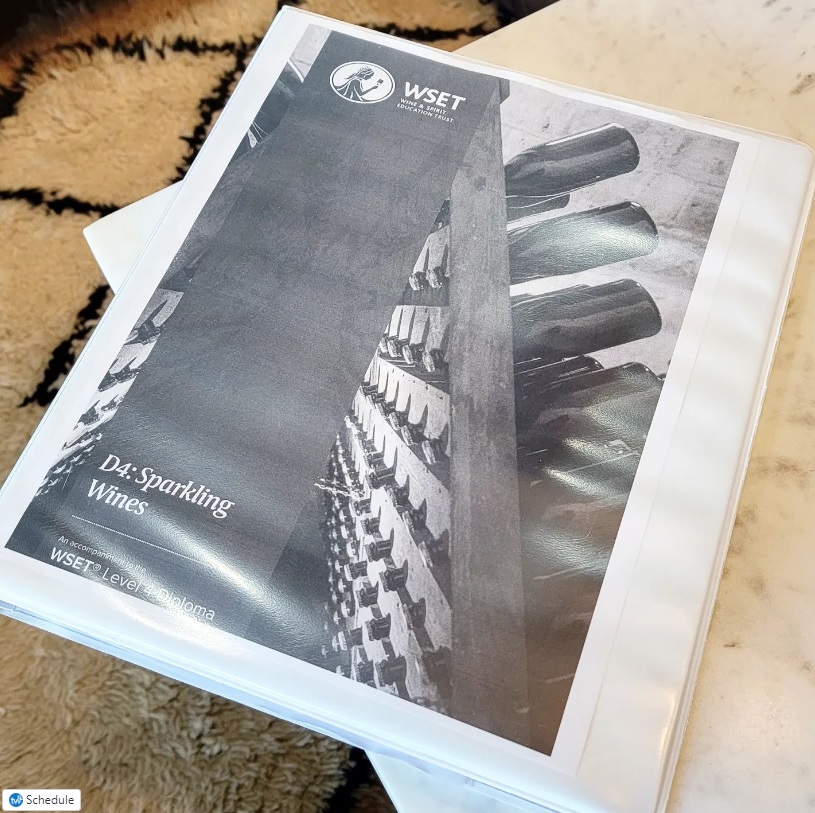
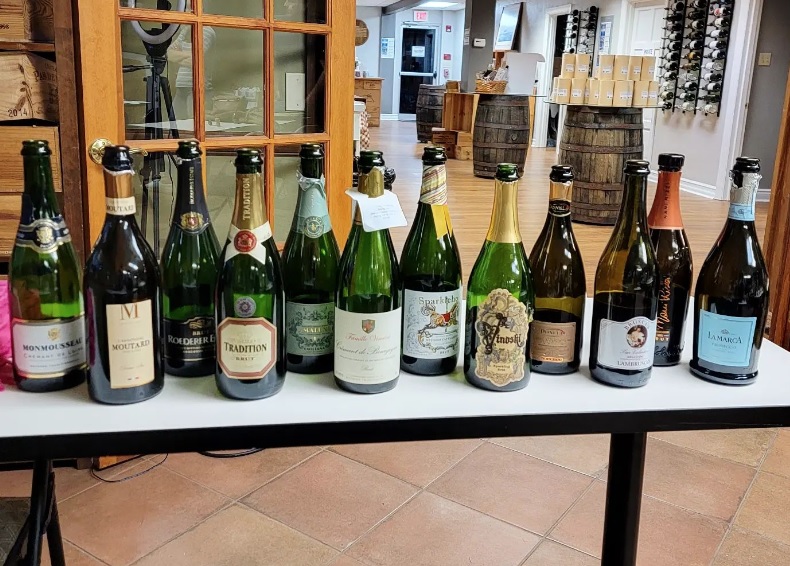
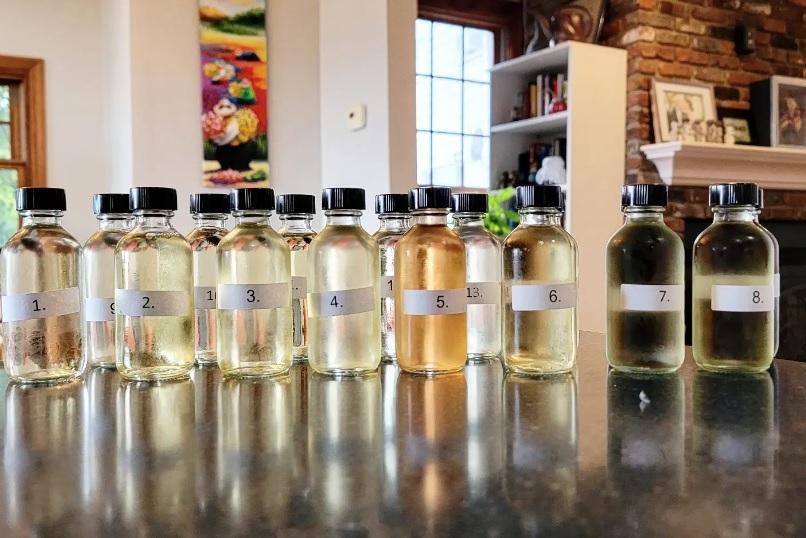


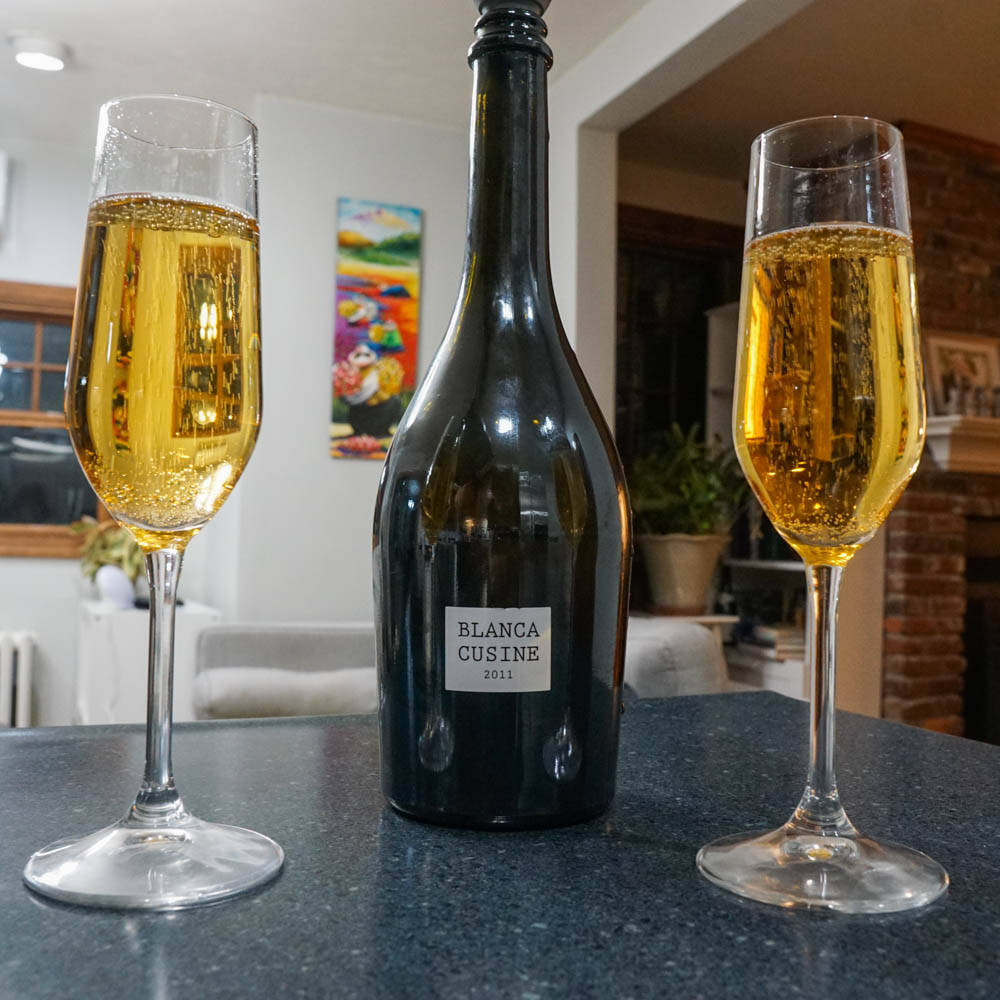
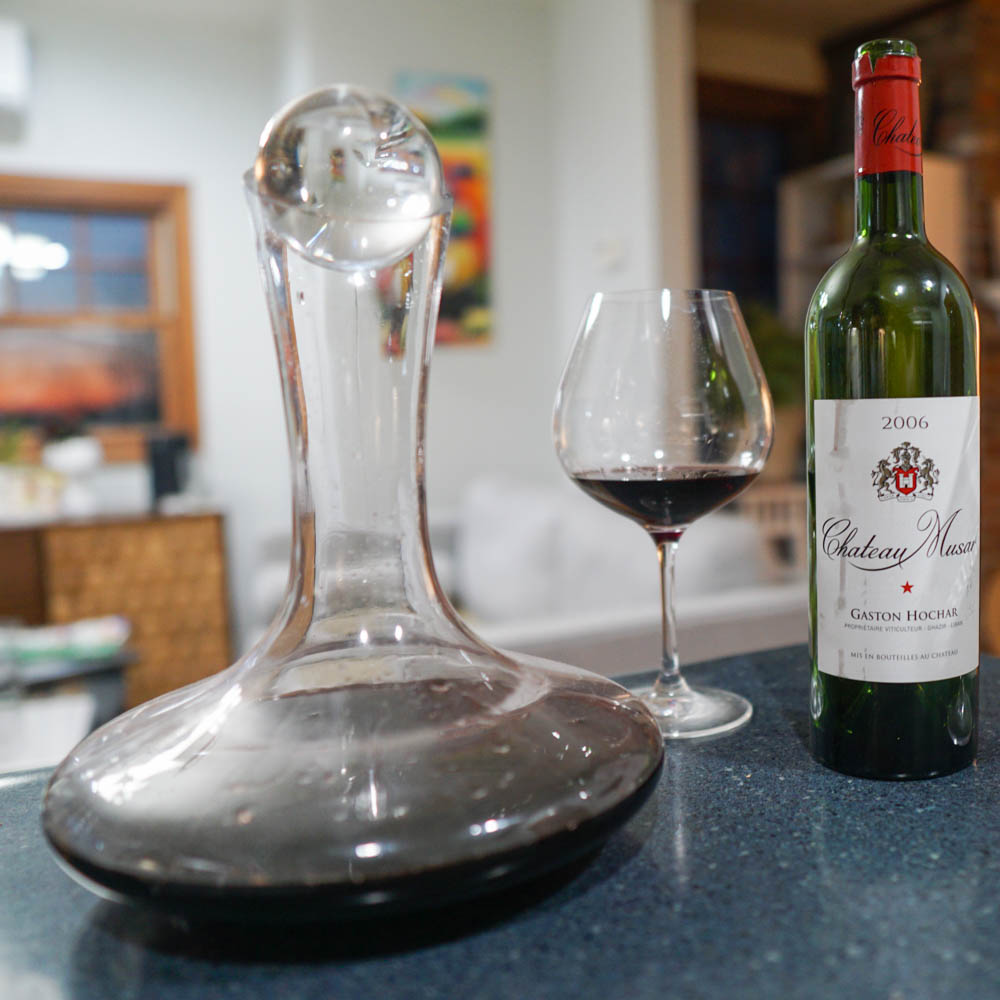
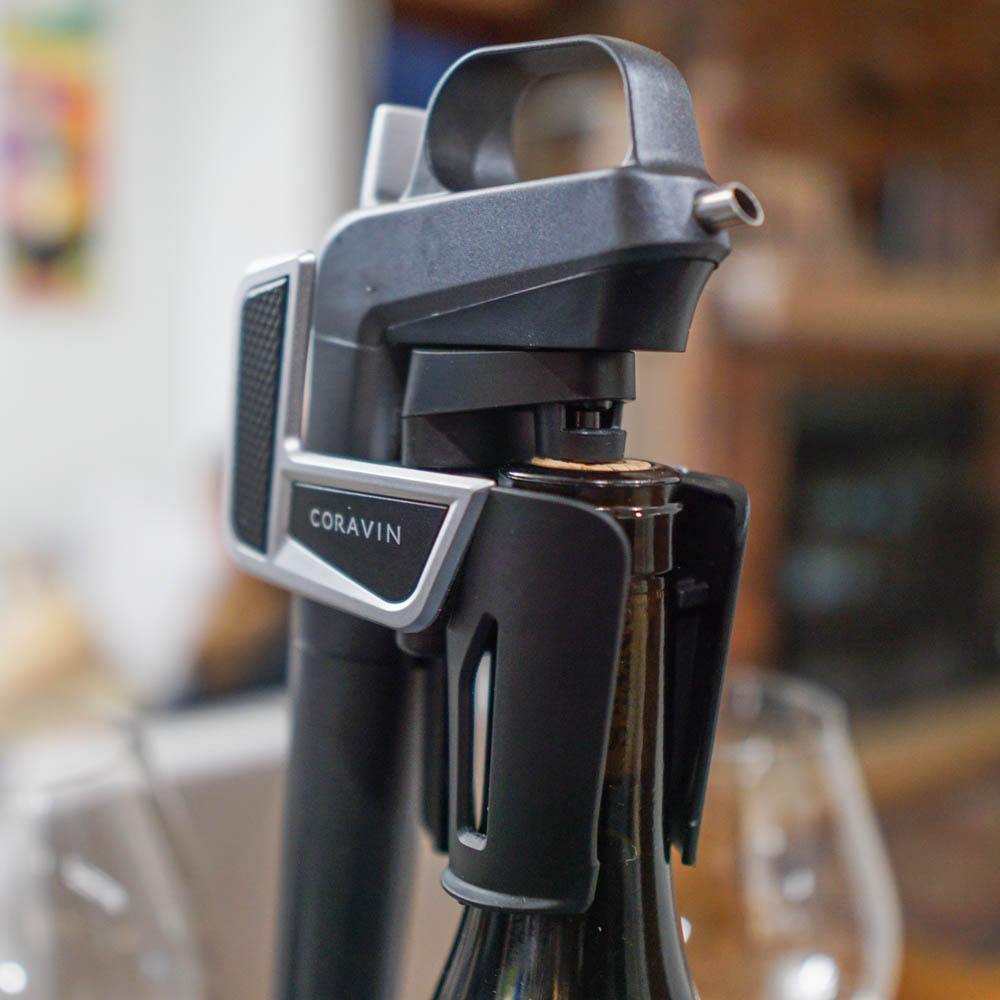
Just a quick question, but first thank you for the great summary it is helpful on my venture to complete Diploma level. I did not notice in your summary how many descriptors are required for the nose and palate? For the life of me I cannot remember 🤨
Do you remember and if so can you share
Thank you!
Off the top of my head, I believe its five descriptors for aroma, four for flavor (plus one more for intensity on each). If the wine has secondary and/or tertiary notes, a minimum of one of each has to be present. So in aromas if the wine DOES have secondary and tertiary, at least two of the five have to be one of each. If you only list primary aromas (e.g. fruit) and there are lees, age, etc., you will miss at least one if not two points.
That said, I shoot for about 10 for each as a hedge. You won’t lose points for being wrong unless you are overtly wrong (e.g. blackberry in a white wine or just writing out everything as an obvious attempt to game the test.) Your aromas and flavors need to be used in your justification for guessing the grape/region/etc and, of course, you can’t spend too much time writing out flavors because the bulk of your writing probably should be on theory, too.
I would recommend re-reading the specifications before taking the exam, as well as the most recent examiner reports as well. This will help you get the best feel on what WSET is looking for, especially in some of the most recent exams. Those are found in the online portal for Diploma students.